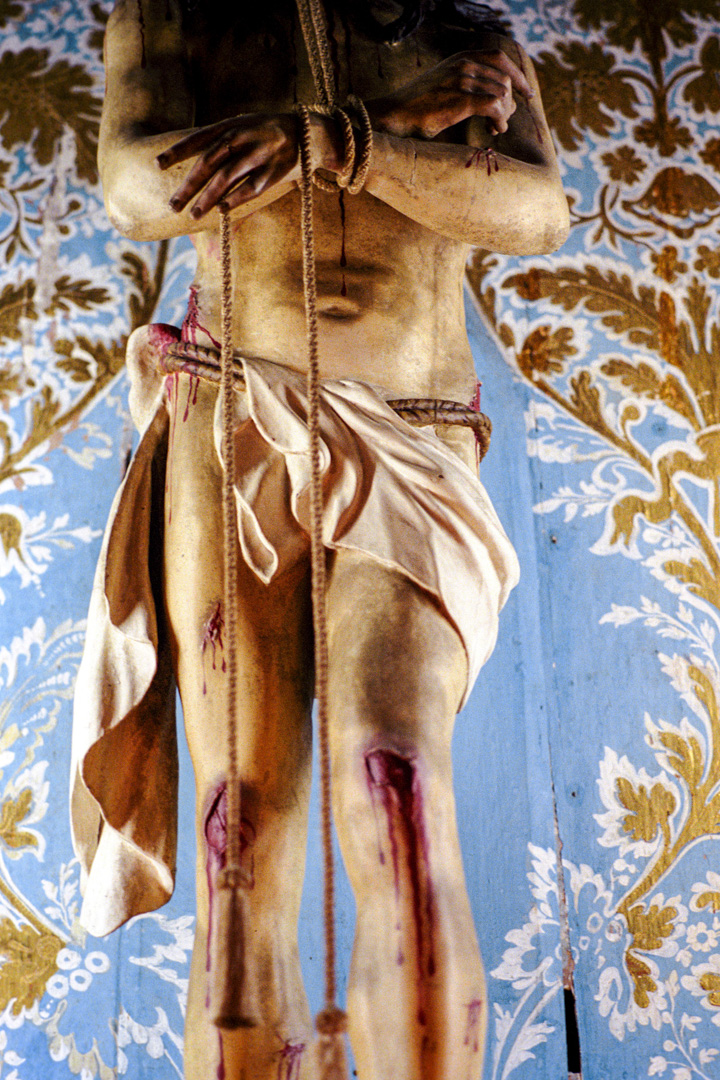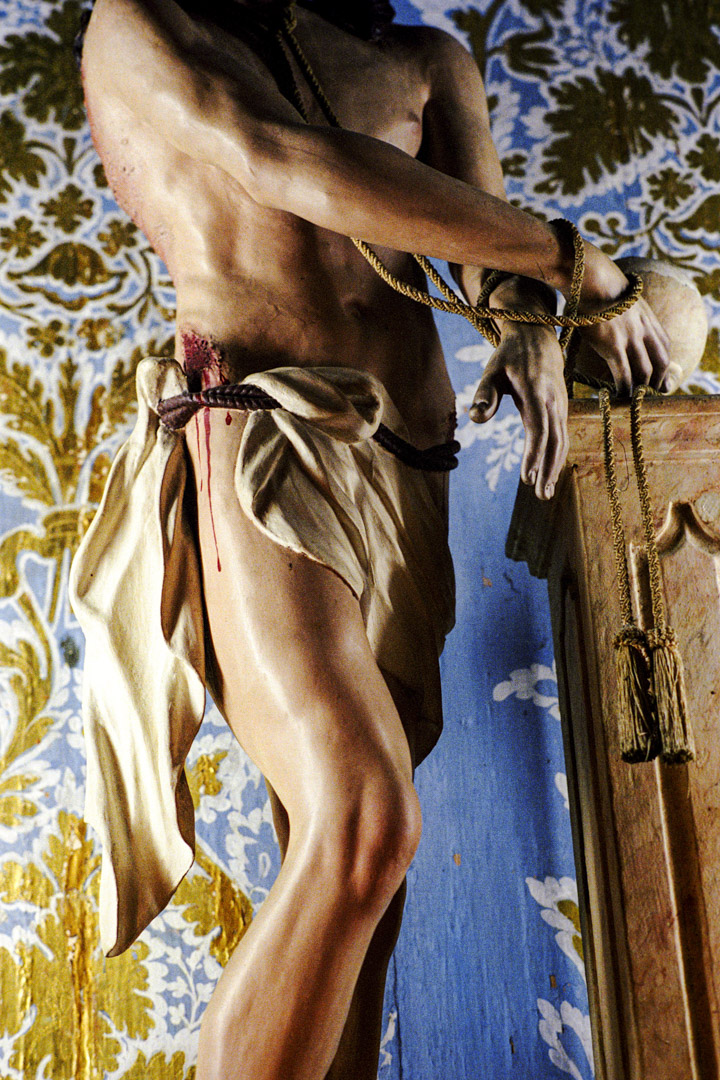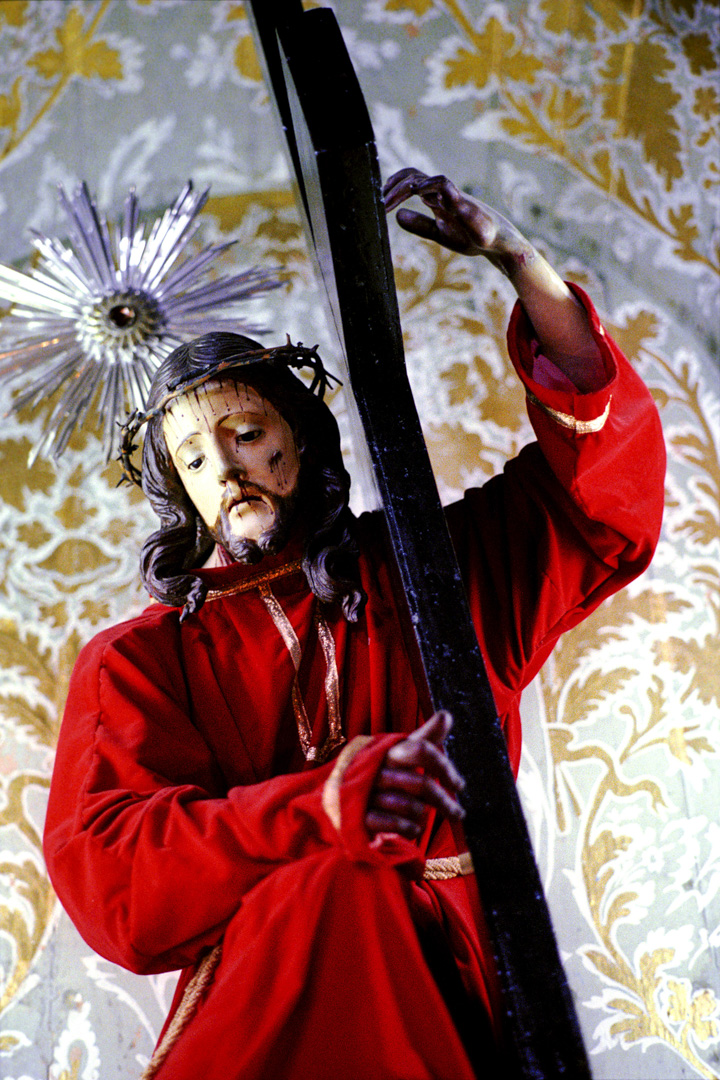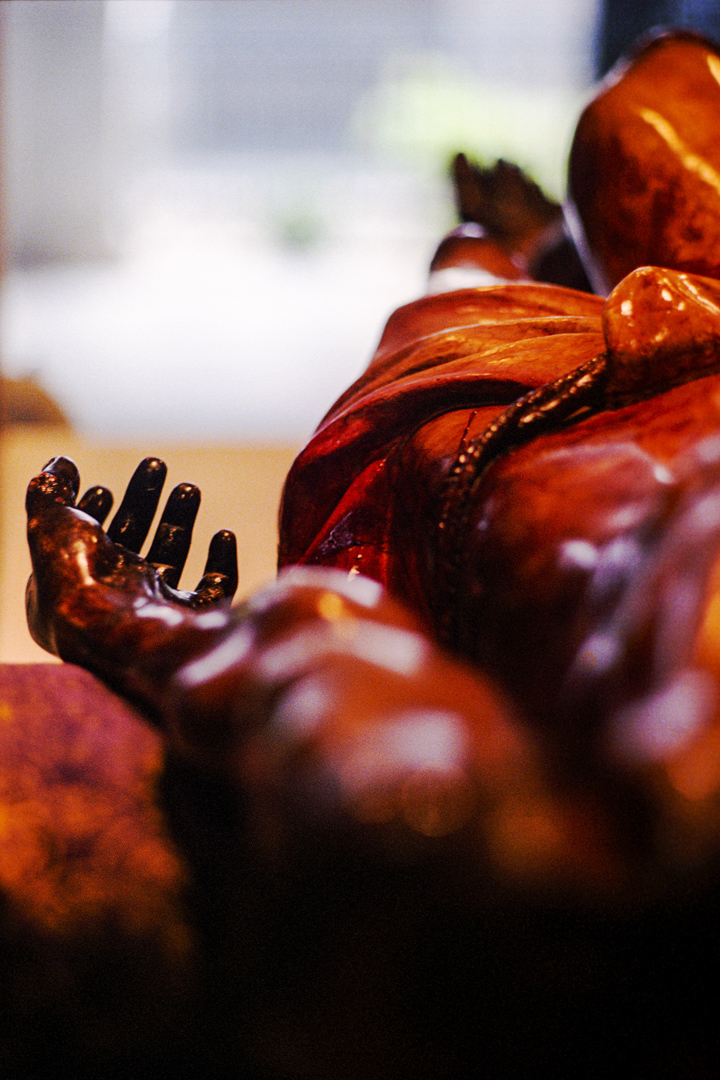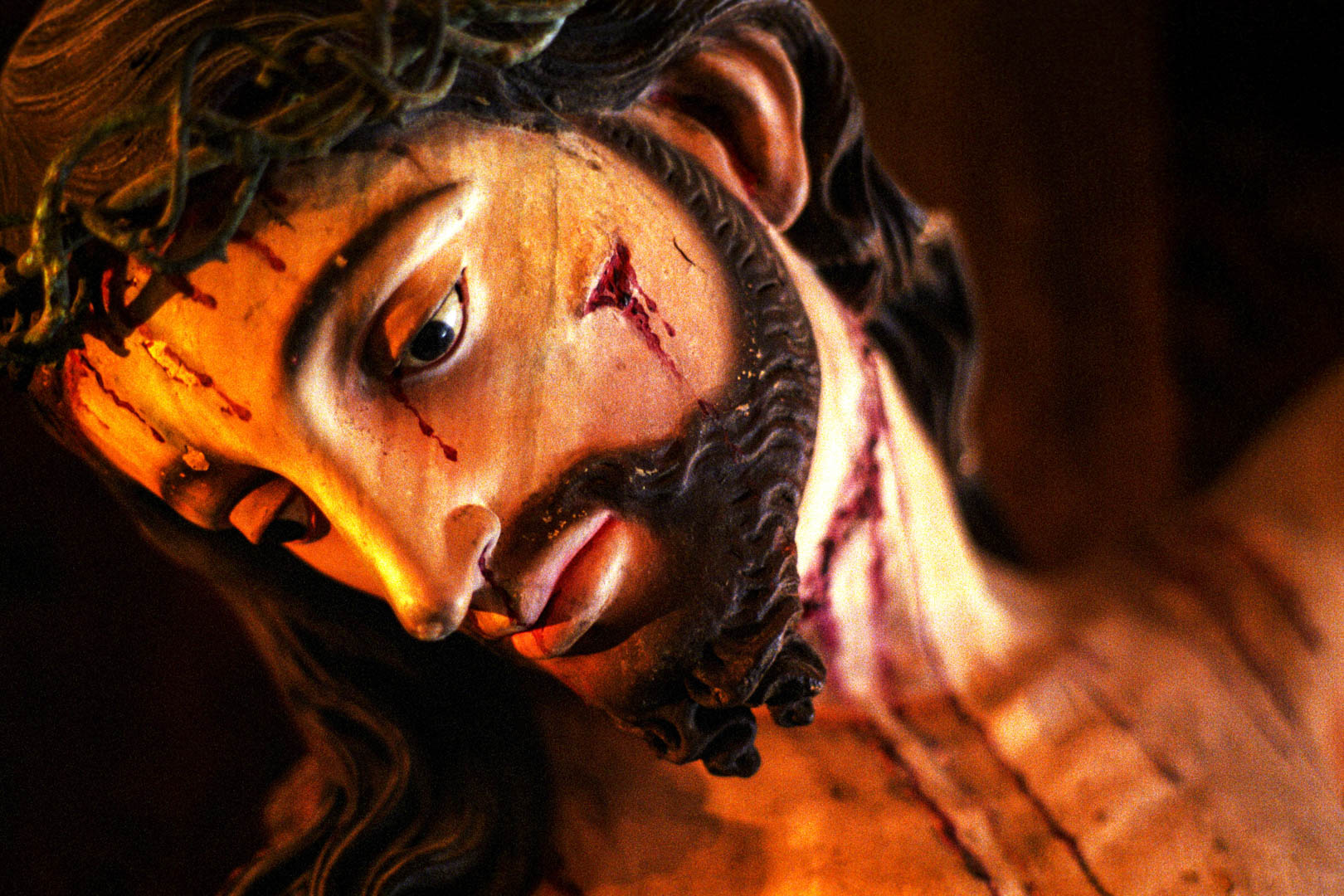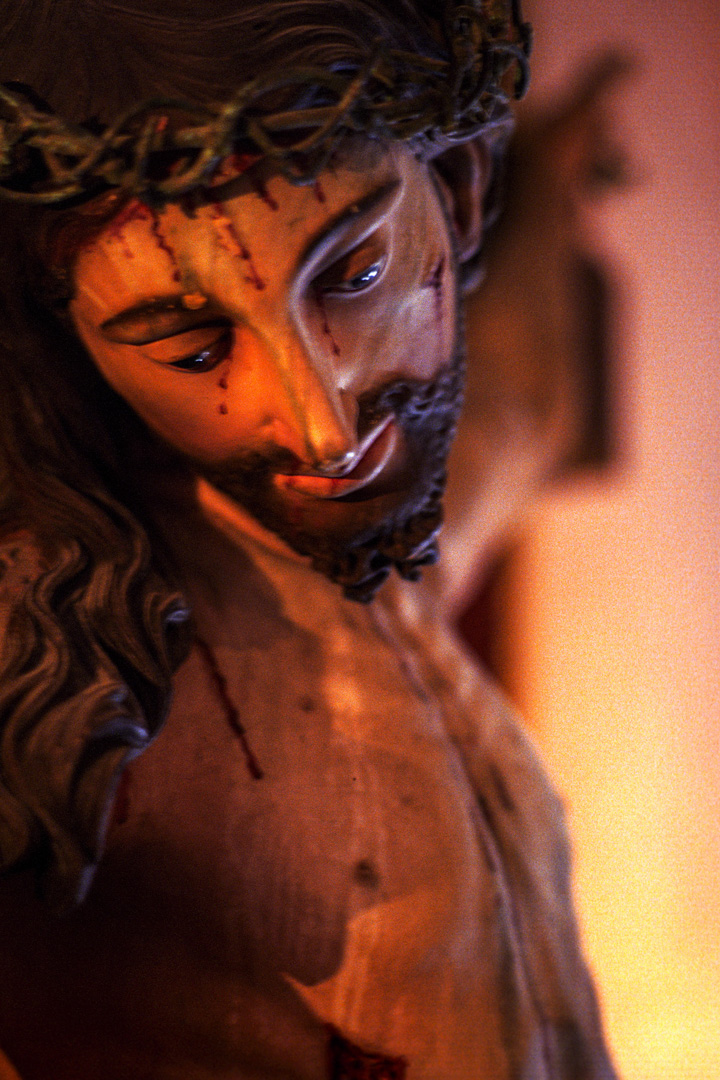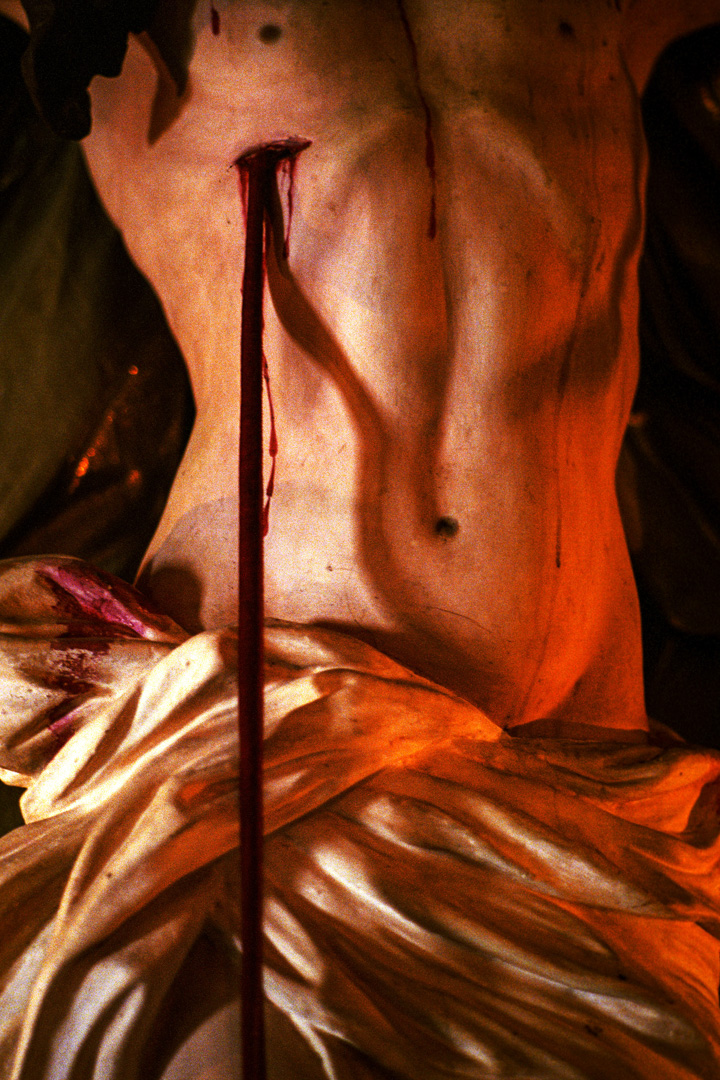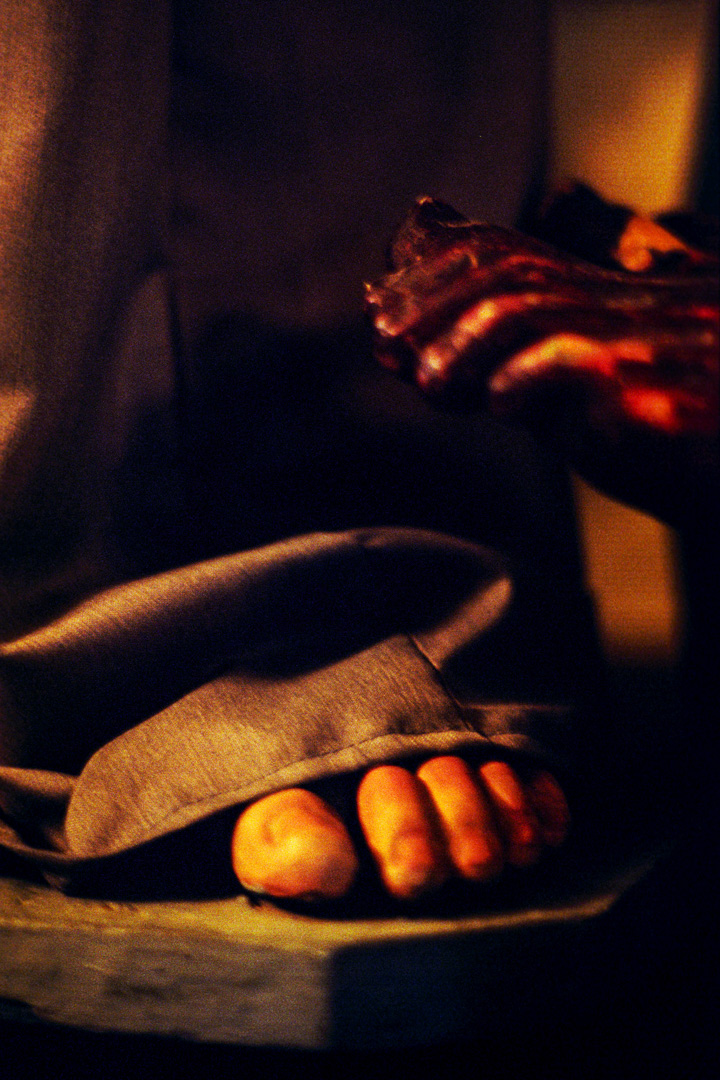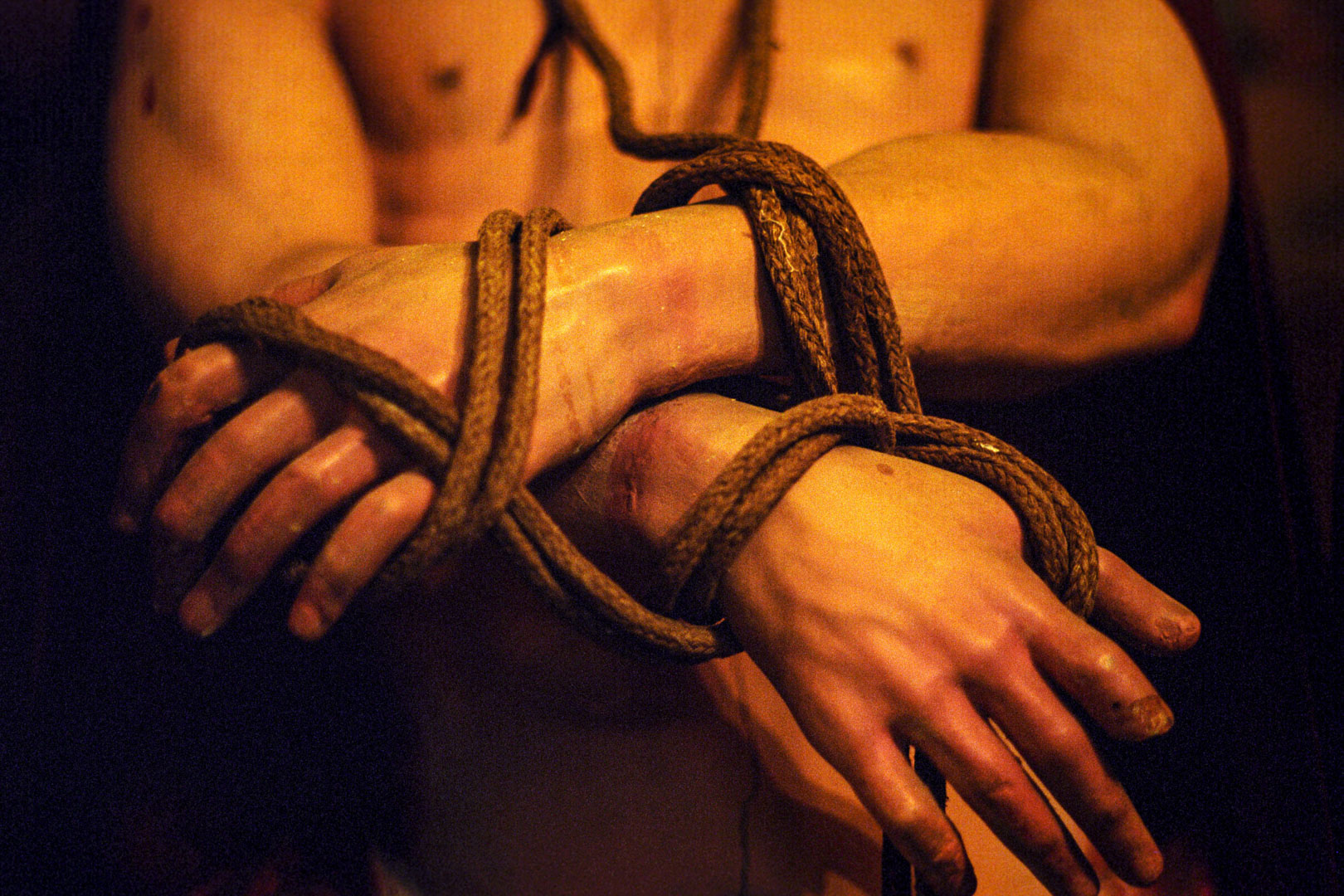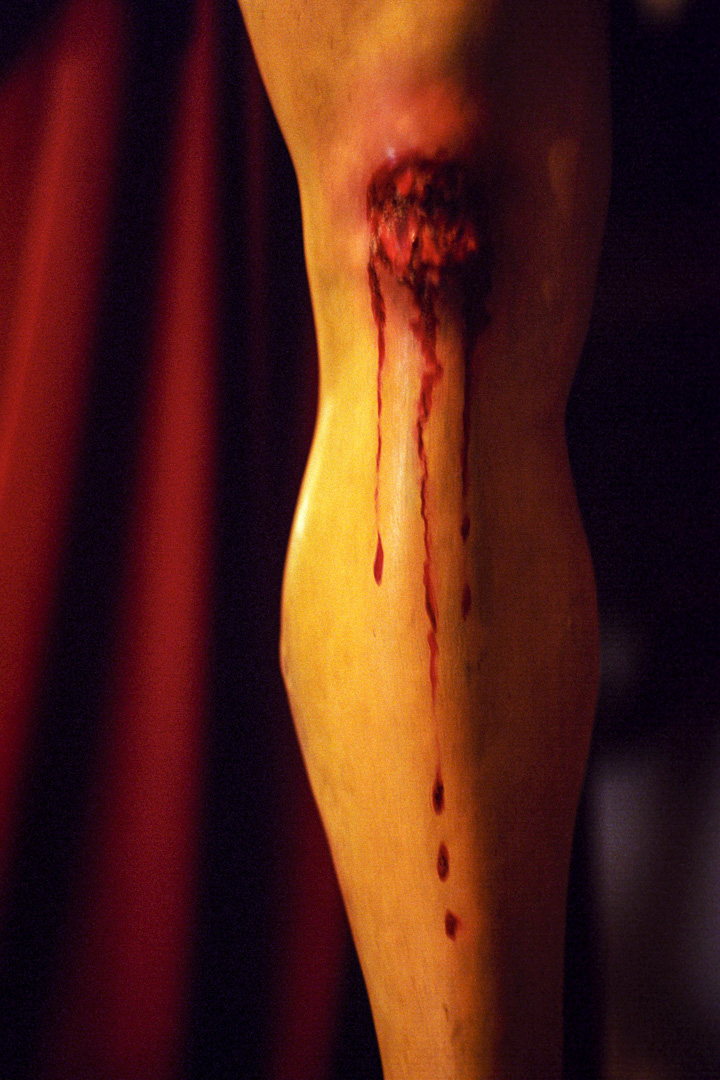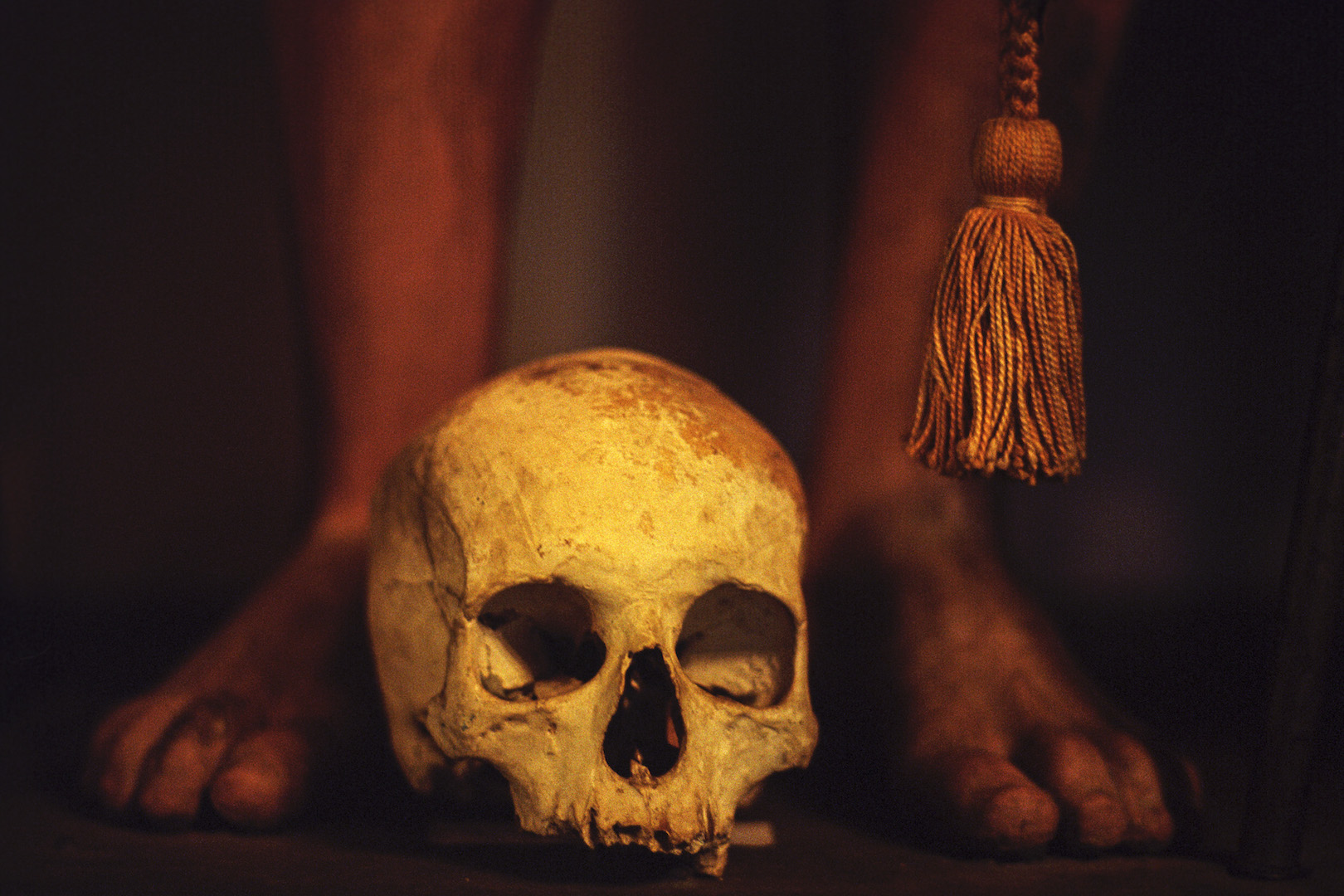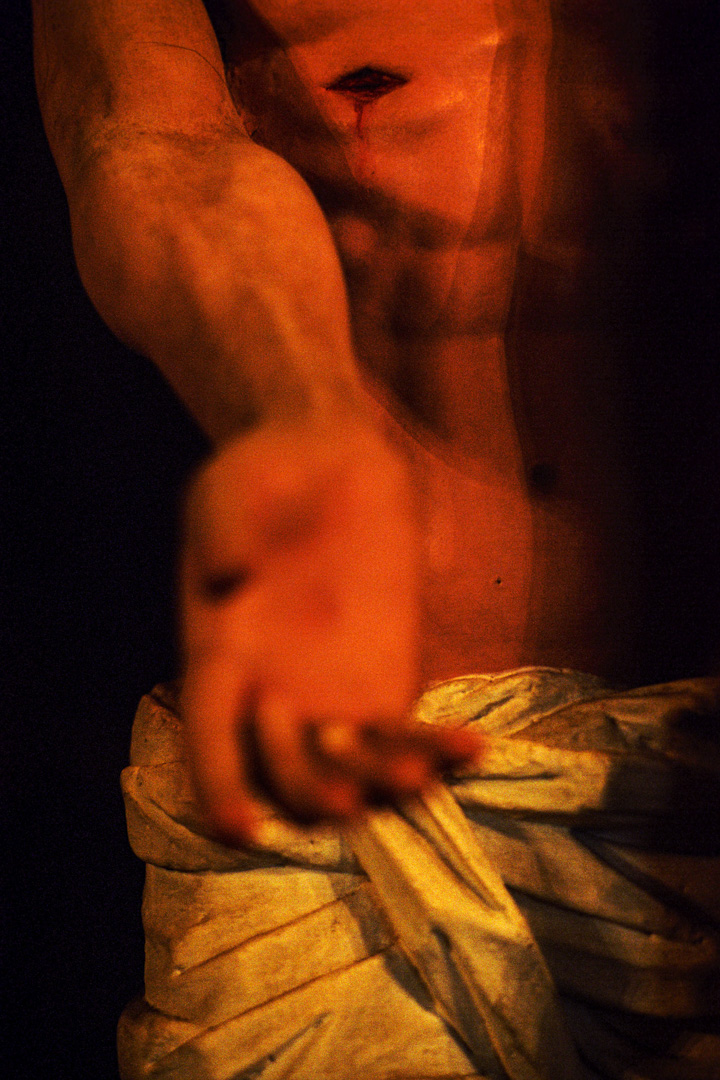Les Christs de Salvador, 2004
In Salvador de Bahia the Carnival was in full swing when I decided to seek refuge in the quiet and inspiring holy sites offered by the city.
It is here, at the heart of the churches and museum of sacred art, that I realized how much the figure of Christ was prevalent and unavoidable in a country which, day after day, moved me more and more.
If the history of religions – western and oriental – has always been of interest to me, it is their depiction by mankind, in all forms of art, that facinated me.
In Salvador the exacerbated religious feeling, imported and imposed by Western colonisation and Christian civilisation, is best expressed by the the figures of Christ. Never had I seen in Europe or in any Latin American countries where I had travelled, such an array of realistic and facinating sculptures. I was particularly disturbed by the suffering and sado-masochistic aspects of these objects and I wanted to represent them as I saw them : flesh and blood figures displaying in the full light of day their physical and mental wounds.
I chose to photograph these Christs, whose carnal presence was intense, in the light that flooded them and which evoqued for me that of the Spanish golden age and the light of the Italian Caravaggios. These Christs, bloody and sublime, came in all sizes and in all colours : in wood, plaster, ivory, in silver or in gold. Sculpted by the best masters, portugese or foreign, free or enslaved, these Christs were always sublime : tortured or mutilated but always solitary and majestic. There was a sense of tragic beauty emerging from these suffering bodies and a pathetic expression which deeply affected me.
I knew that by immortalizing the Christs, it was to some extend my own wounds that I was recording on the sensitive layer of the film. To photograph this figure, when in the quest for the absolute, is to unconsciously produce a self-portrait.
François Fontaine
